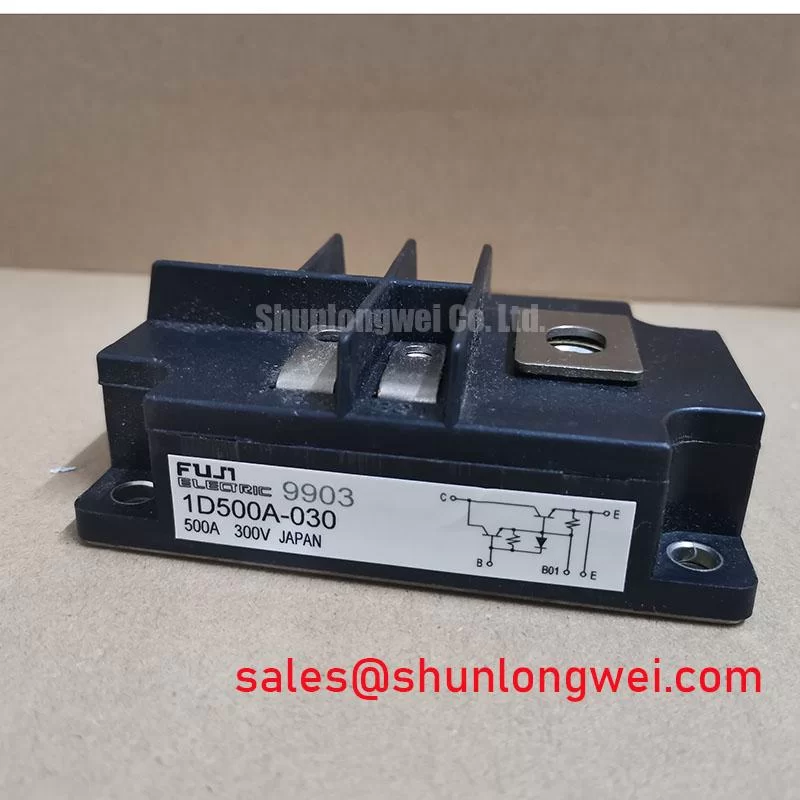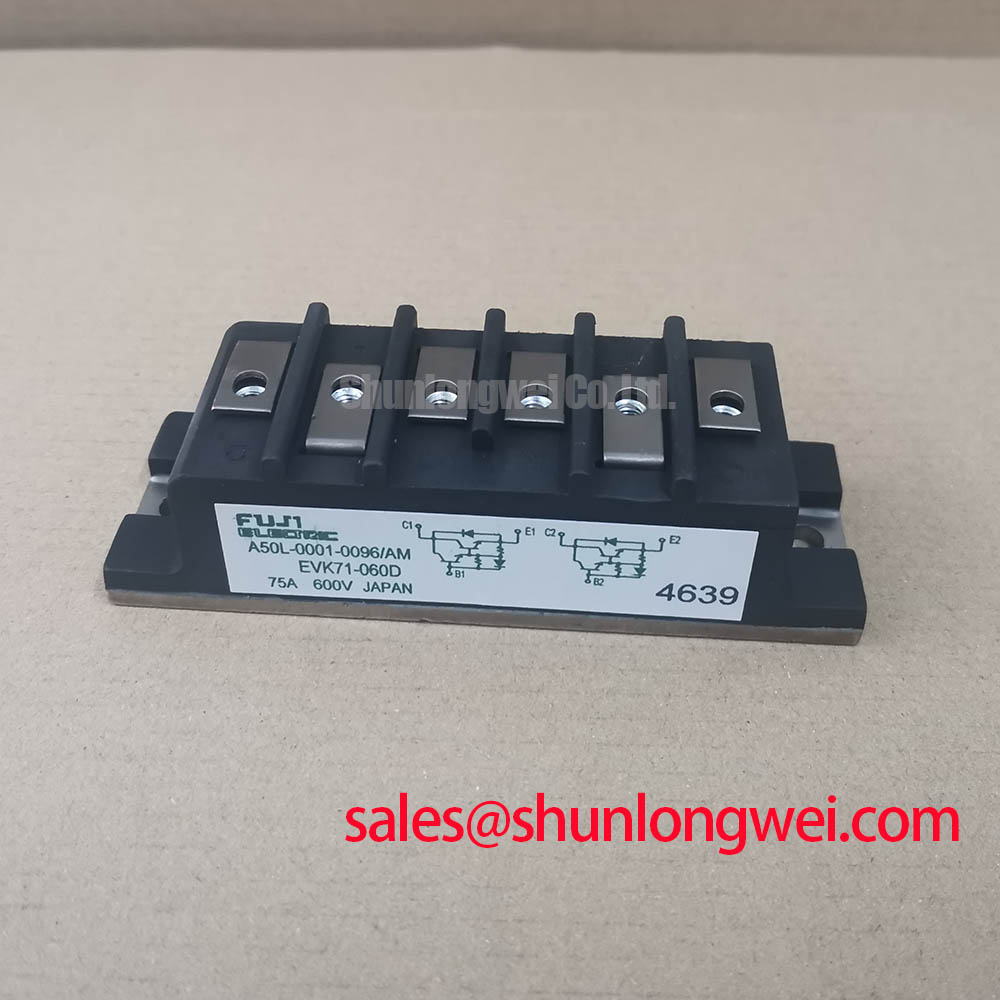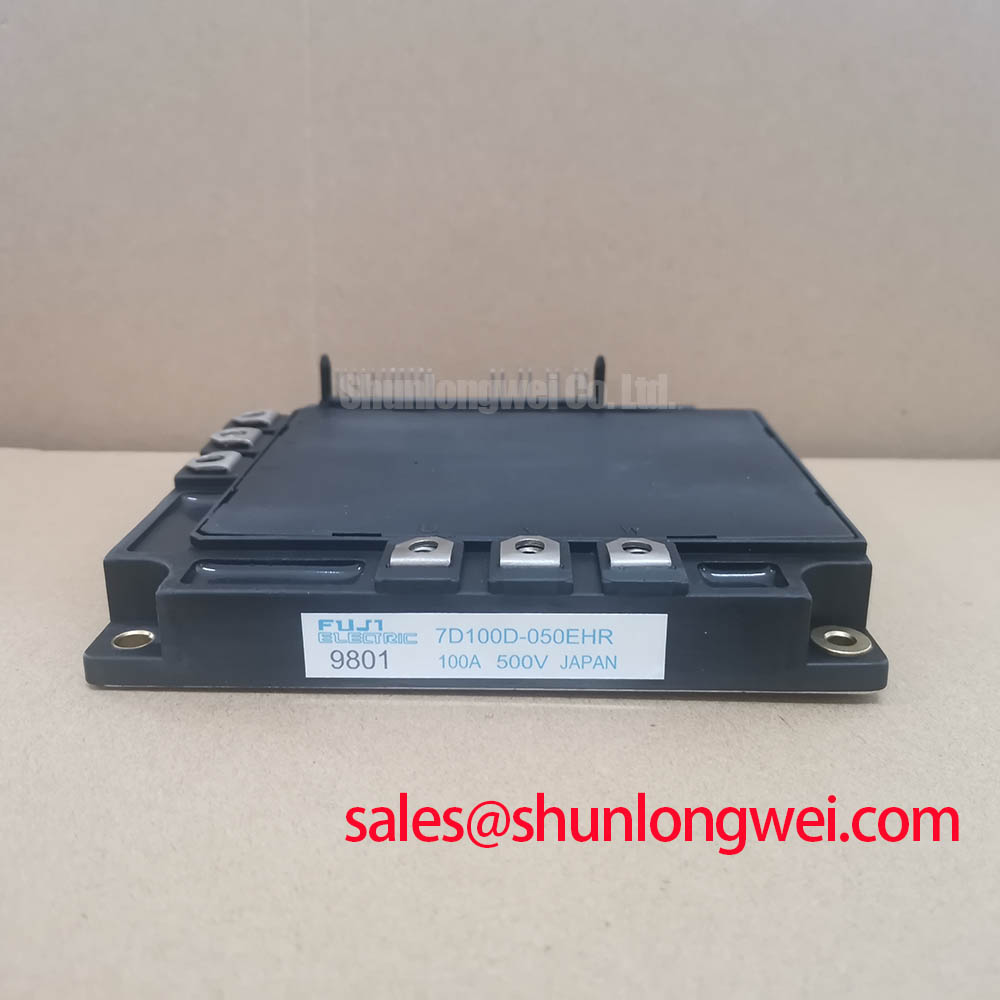Content last revised on November 15, 2025
Fuji Electric 1D500A-030 Diode Module: Technical Specifications and Engineering Analysis
Introduction to the 1D500A-030 High-Current Rectifier
Delivering Thermally Stable and Reliable Power Conversion
The Fuji Electric 1D500A-030 is a high-current diode module engineered for robust performance in demanding industrial power conversion systems. Delivering a potent combination of electrical and thermal specifications—300V | 500A | Rth(j-c) 0.07°C/W—this component provides a dependable foundation for high-power rectification. Key benefits include superior current handling and highly efficient thermal dissipation. For engineers designing systems like high-output welding power supplies or industrial battery chargers, this module offers a straightforward path to achieving reliable high-current rectification without overly complex thermal management. For systems requiring high current capacity with dependable thermal stability, the 1D500A-030's low thermal resistance makes it a prime candidate for evaluation.
Key Parameter Overview
Decoding the Specs for Enhanced Thermal Reliability
The technical specifications of the 1D500A-030 are foundational to its performance in high-stress environments. The parameters below have been selected to provide engineers with the critical data needed for system design and thermal modeling. The module's low thermal resistance is particularly noteworthy, as it directly facilitates more effective heat removal, a cornerstone of long-term operational reliability.
| Parameter | Symbol | Conditions | Value | Unit |
|---|---|---|---|---|
| Repetitive Peak Reverse Voltage | V_RRM | - | 300 | V |
| Average Forward Current | I_F(AV) | 50Hz/60Hz, Sine wave, R-load, Tc=94°C | 500 | A |
| Peak One Cycle Surge Forward Current | I_FSM | 50Hz, Sine wave, Non-repetitive | 7000 | A |
| Forward Voltage Drop | V_F | Tj=150°C, I_F=1500A | 1.25 | V |
| Thermal Resistance (Junction to Case) | Rth(j-c) | - | 0.07 | °C/W |
| Maximum Junction Temperature | Tj max | - | 150 | °C |
| Isolation Voltage | V_iso | Terminals to Base, AC 1 min. | 2500 | V |
Note: The parameters listed above are subject to specific test conditions. For comprehensive electrical characteristics and performance curves, please refer to the official documentation.
Application Scenarios & Value
System-Level Benefits in High-Current Rectification Stages
The 1D500A-030 diode module is engineered as a foundational component for a range of high-power industrial applications where reliability and thermal stability are non-negotiable. Its robust 500A current rating and low thermal impedance provide tangible value in systems that are subjected to continuous, heavy loads.
- Welding Power Supplies: In high-output welding equipment, the module serves as a durable output rectifier. Its high surge current capability (I_FSM) of 7000A is critical for handling the demanding current pulses inherent in welding processes, ensuring the component's survival and longevity.
- Industrial Battery Charging Systems: For large-scale battery chargers, such as those used for forklift fleets or backup power systems, the 1D500A-030 provides the high continuous current needed for rapid charging cycles. Its efficient thermal performance helps maintain system stability during prolonged operation.
- Electroplating and Smelting Power Rectifiers: These applications demand constant, high DC current. The module's low forward voltage drop (V_F) contributes to higher overall system efficiency by minimizing power loss as heat. Think of V_F as electrical friction; a lower value means less energy is wasted, directly translating to reduced operating costs over the equipment's lifespan.
- General-Purpose High-Power DC Supplies: Any application requiring the conversion of high AC power to DC can leverage this module's straightforward design and robust electrical characteristics. The 2500V isolation voltage simplifies safety engineering and helps meet stringent industrial standards.
For systems that may require even greater current handling capabilities, the related 1D600A-030 offers a higher current rating within a similar operational framework.
Frequently Asked Questions (FAQ) about the 1D500A-030 Diode Module
What is the primary benefit of the 1D500A-030's thermal resistance value?
Its low thermal resistance of 0.07°C/W signifies highly effective heat transfer from the semiconductor junction to the module's baseplate. This simplifies heatsink selection and improves the module's long-term reliability by minimizing operating temperature under load.
Can this module be used in switched-mode power supply (SMPS) applications?
As a standard rectifier diode, this module is primarily designed for line-frequency rectification (50/60Hz). Its recovery characteristics are not optimized for the high switching frequencies typically found in modern SMPS designs.
How does the 300V VRRM rating influence its application range?
The 300V repetitive peak reverse voltage rating provides a safe operating margin for rectification from common low-voltage three-phase or single-phase AC lines, such as 120V systems, ensuring it can withstand typical voltage transients without failure.
What are the recommended mounting torque and practices for this module?
For optimal thermal contact and mechanical stability, it is crucial to follow the manufacturer's guidelines specified in the official datasheet regarding mounting torque for both the main terminals and the module's baseplate. Uneven or incorrect torque can lead to poor thermal performance and potential mechanical stress.
Technical Deep Dive
Analyzing the Core of Thermal Stability
A critical, yet often understated, aspect of a high-current module like the 1D500A-030 is its internal construction, which directly impacts thermal performance. The specification of a 0.07°C/W thermal resistance is not merely a number; it's an indicator of an efficient thermal pathway. This efficiency is paramount because every amp of current flowing through the diode generates heat due to the forward voltage drop. An inefficient thermal path is like trying to cool a car engine with a small fan—it quickly becomes overwhelmed. The low Rth(j-c) value ensures that this generated heat is rapidly conducted away from the active silicon junction to the baseplate, and subsequently to the system's heatsink. This rapid heat evacuation is the key to keeping the junction temperature (Tj) well below its 150°C maximum limit, which is the single most important factor for ensuring the module's operational lifespan and preventing premature failure.
Application Vignette
Designing a 30kW Industrial DC Power Supply
Consider an engineer tasked with designing a robust 60V, 500A DC power supply for an electroplating line. Reliability is the top priority. The engineer selects the 1D500A-030 as the core of a full-bridge rectifier stage. The module's 500A average forward current rating provides the necessary capacity without requiring complex paralleling of smaller diodes, which would introduce issues of current sharing and thermal balancing. The engineer's primary focus shifts to thermal management. Using the Rth(j-c) of 0.07°C/W and the V_F value from the datasheet, they can accurately calculate the power dissipation and determine the required heatsink performance to maintain the junction temperature safely below 125°C, providing a healthy 25°C safety margin. The 2500V isolation rating also simplifies the mechanical design, allowing the module to be directly mounted to a grounded chassis heatsink without needing additional insulating layers, which would otherwise increase thermal resistance. This illustrates how the module’s integrated design and clear thermal specifications directly streamline the engineering process for reliable, high-current systems.
Strategic Considerations for System Design
Integrating the 1D500A-030 is a decision that favors design simplicity and long-term durability over cutting-edge switching performance. It is a workhorse component intended for power stages where brute-force reliability at line frequencies is the primary engineering goal. For system architects, this means prioritizing effective thermal design and mechanical mounting to fully leverage the module's inherent robustness. This component represents a commitment to established, proven technology, offering a predictable and dependable solution for the backbone of industrial power conversion. For more in-depth information on power module technologies, resources from manufacturers like Fuji Electric provide valuable context on component selection and application.













